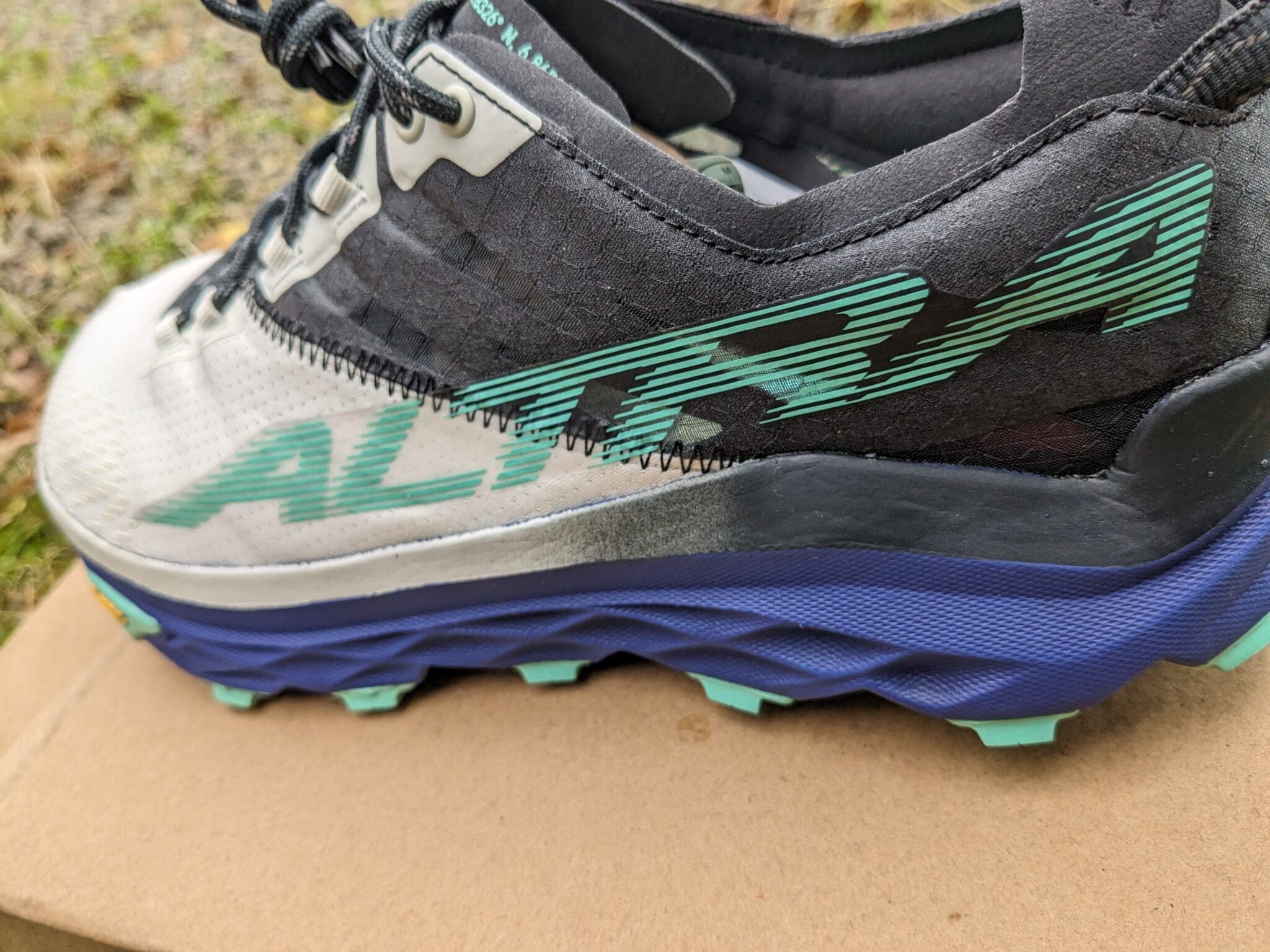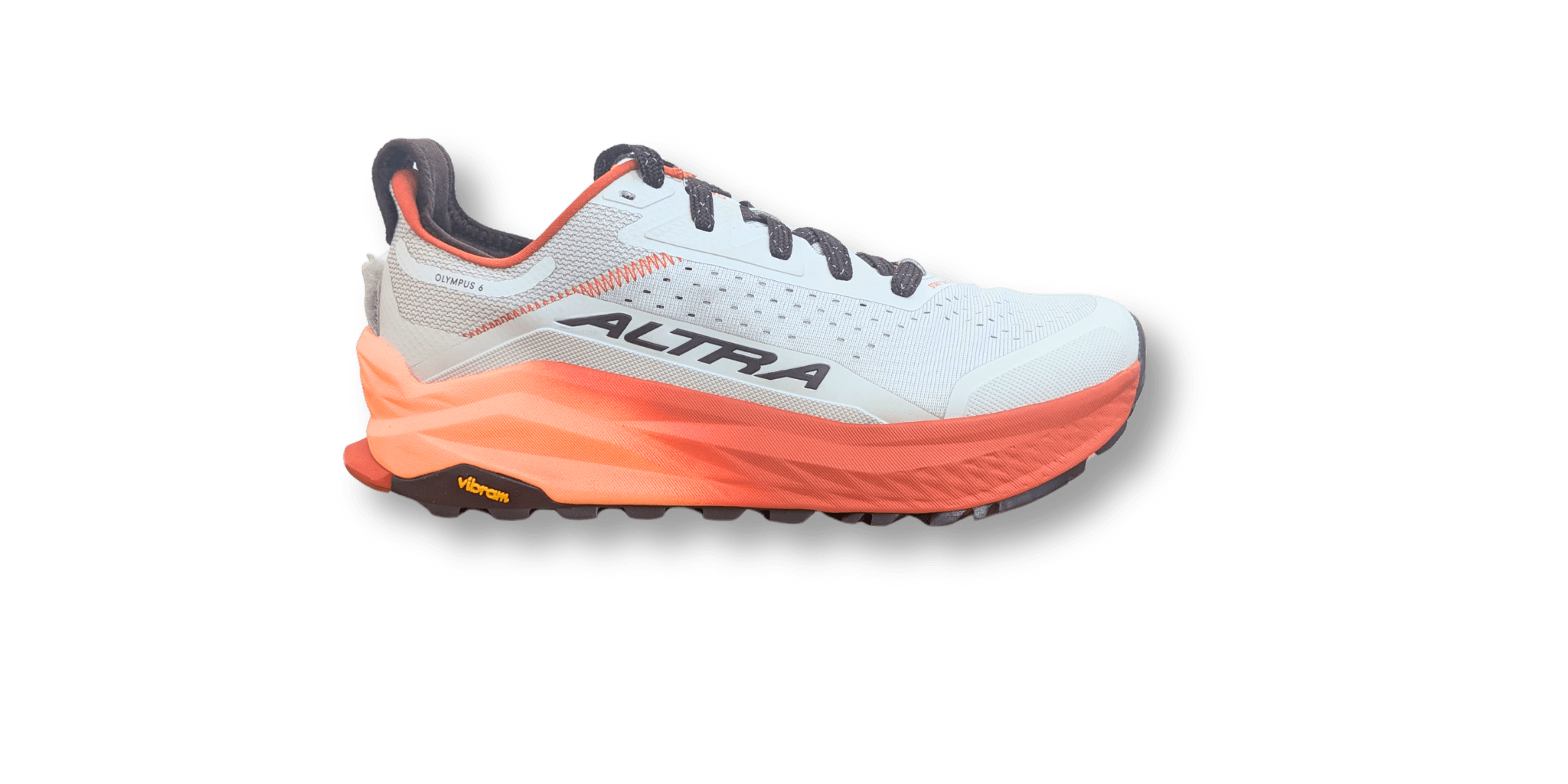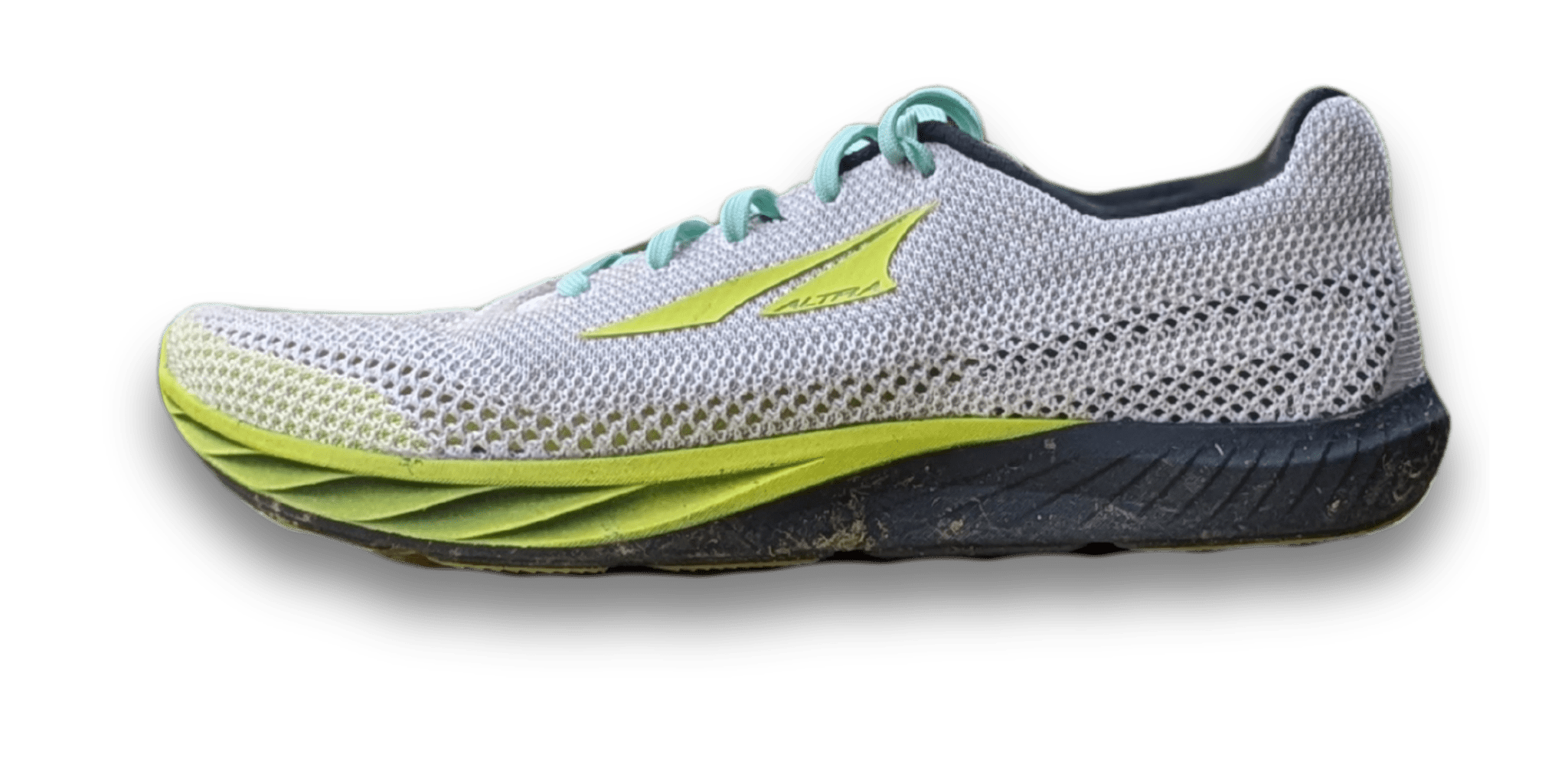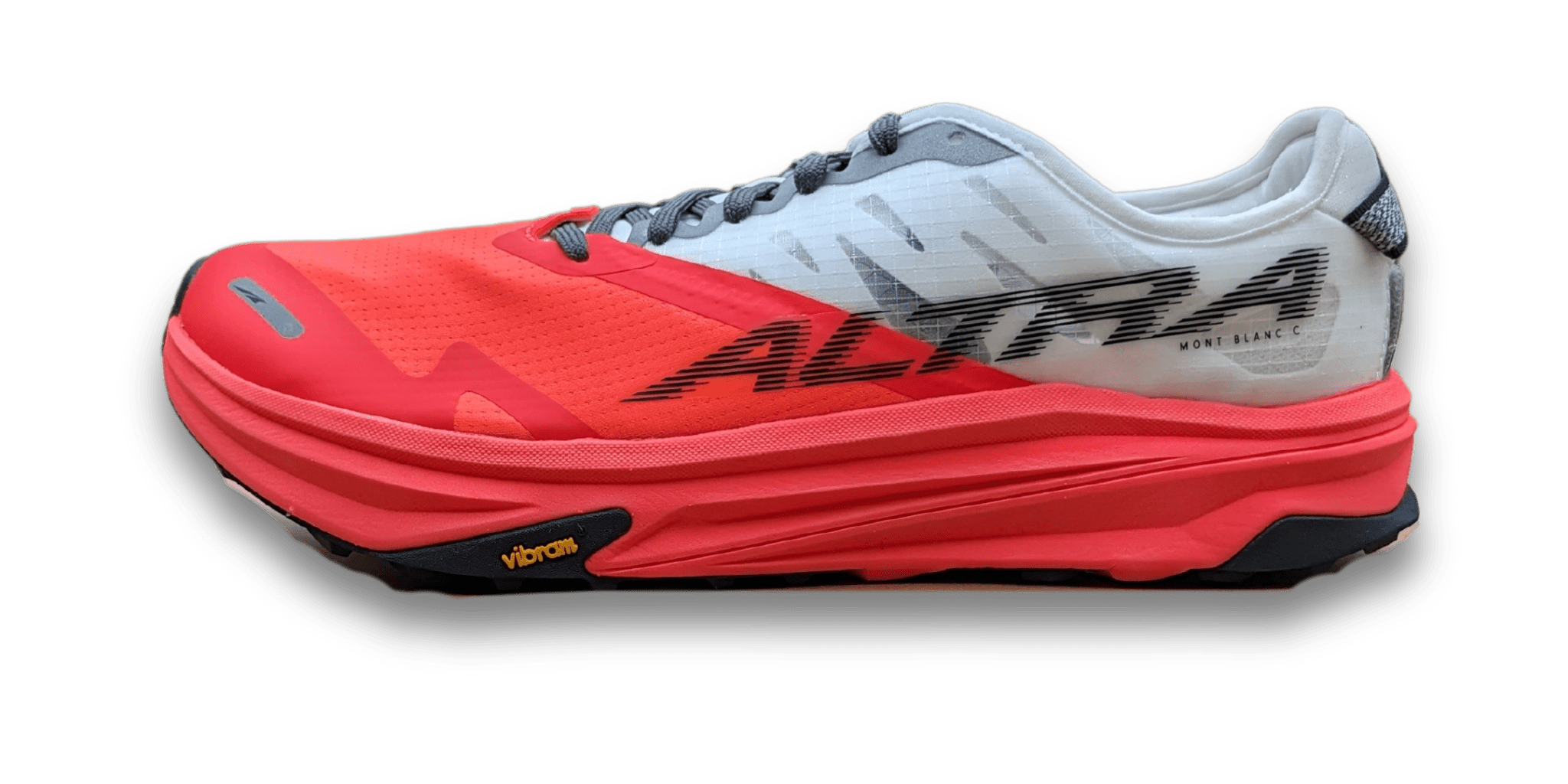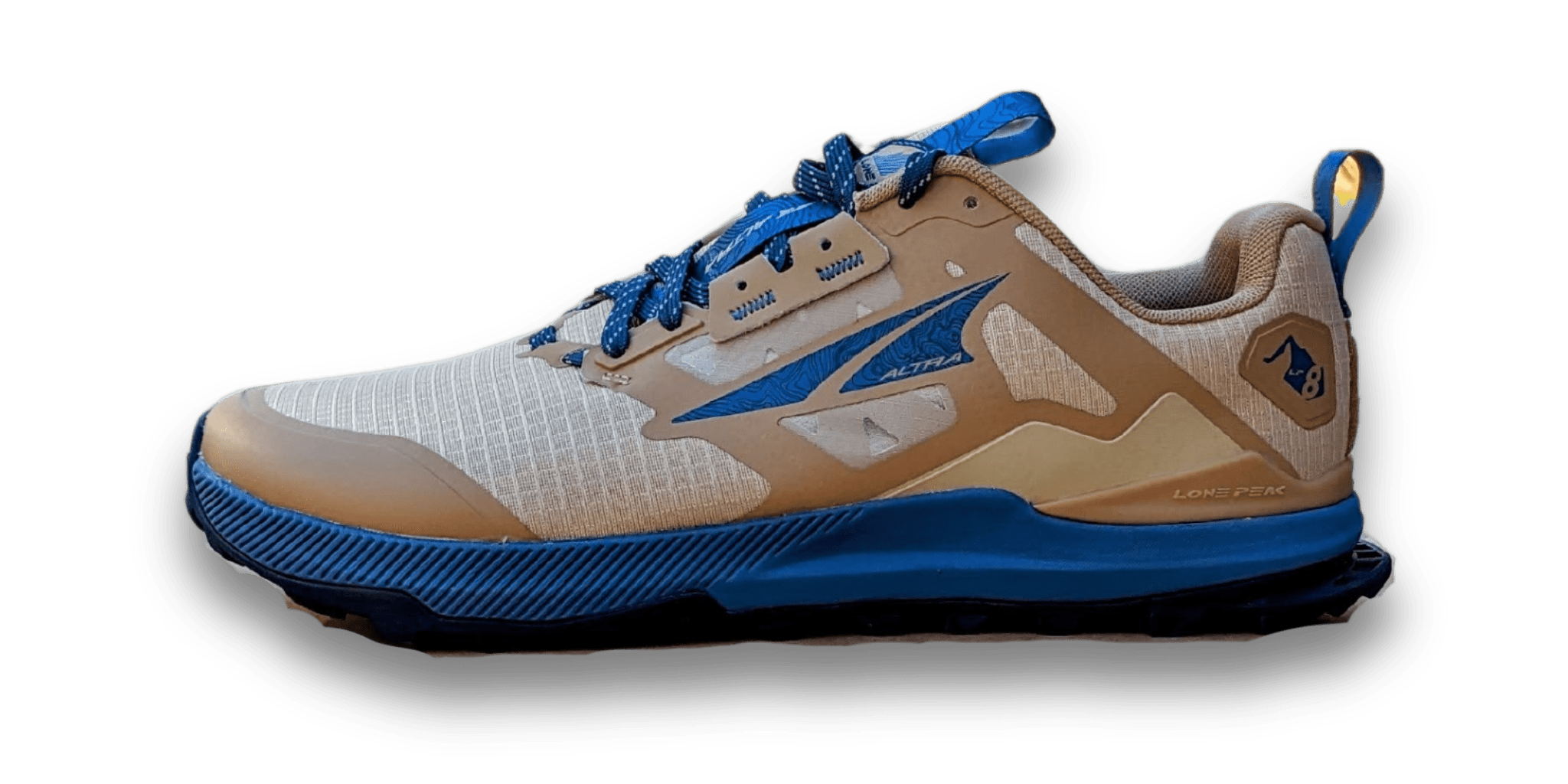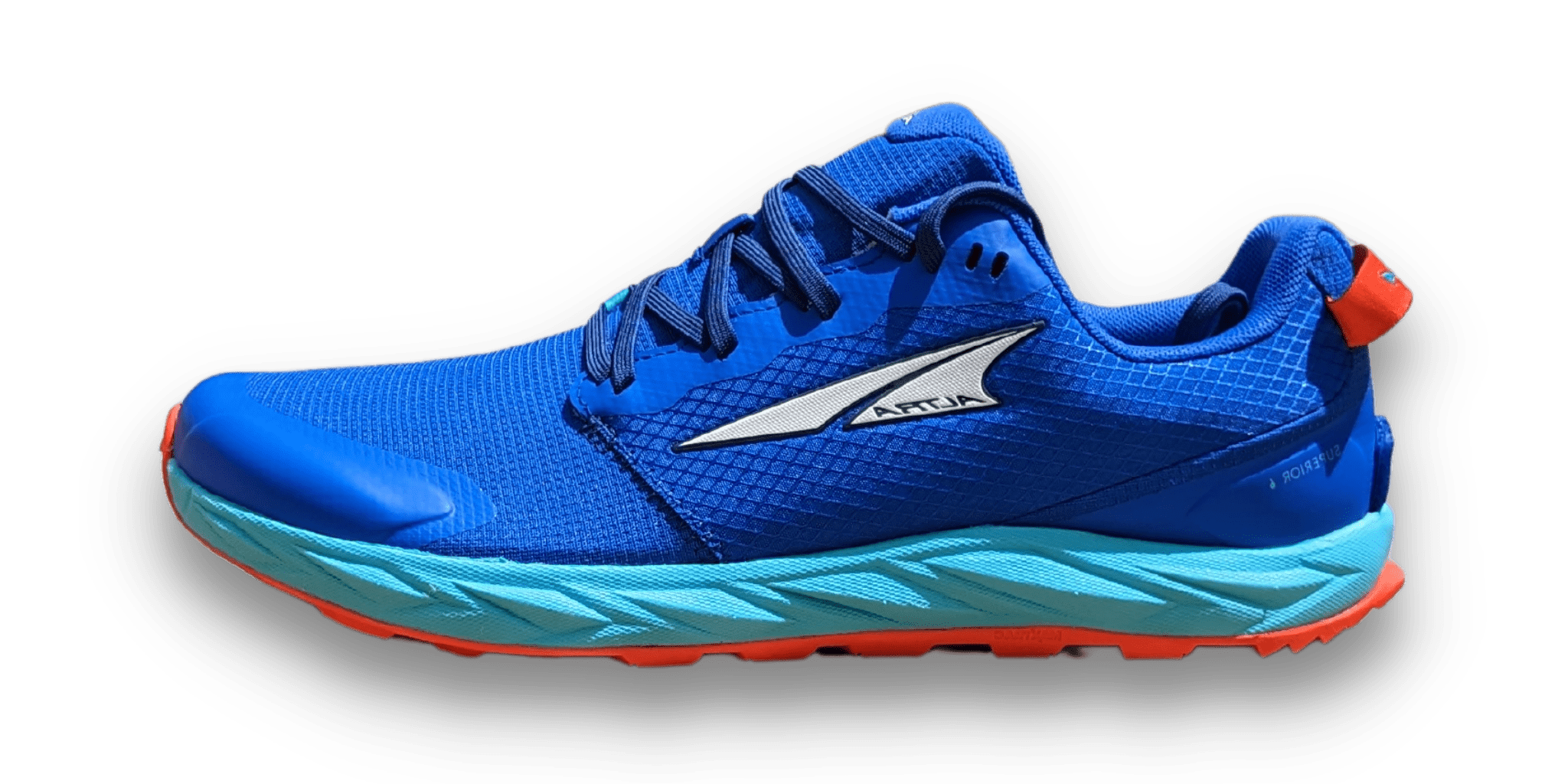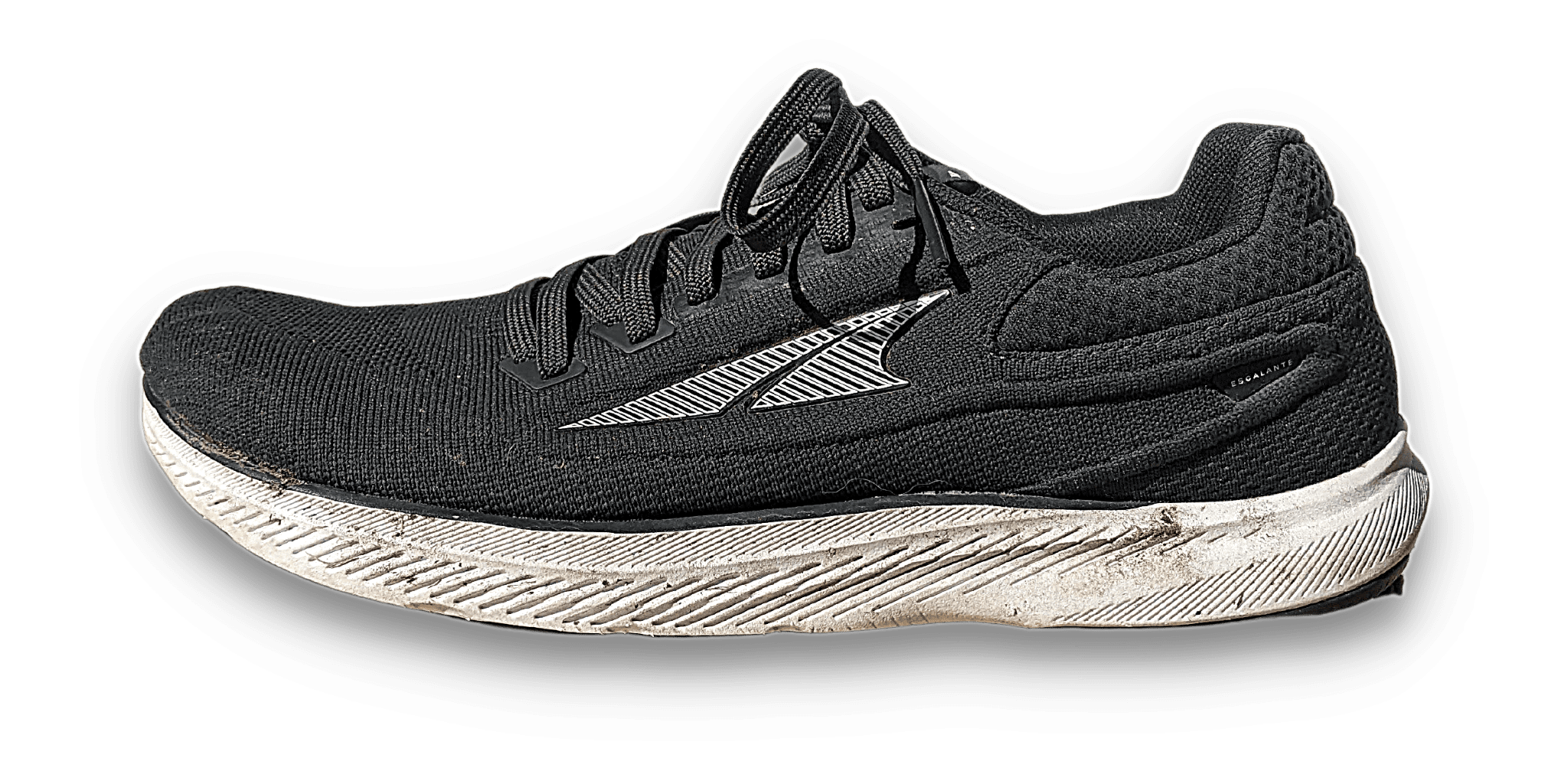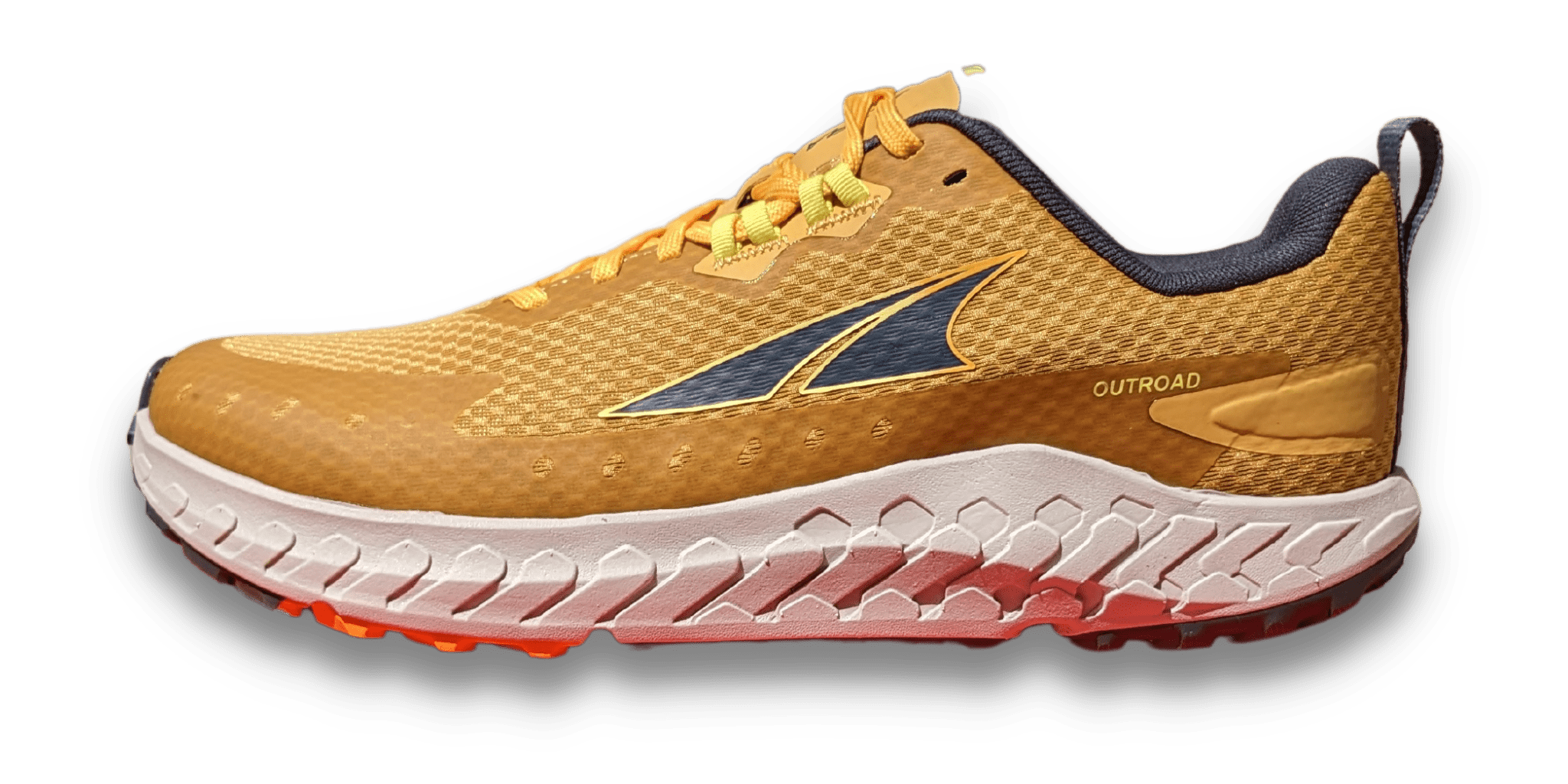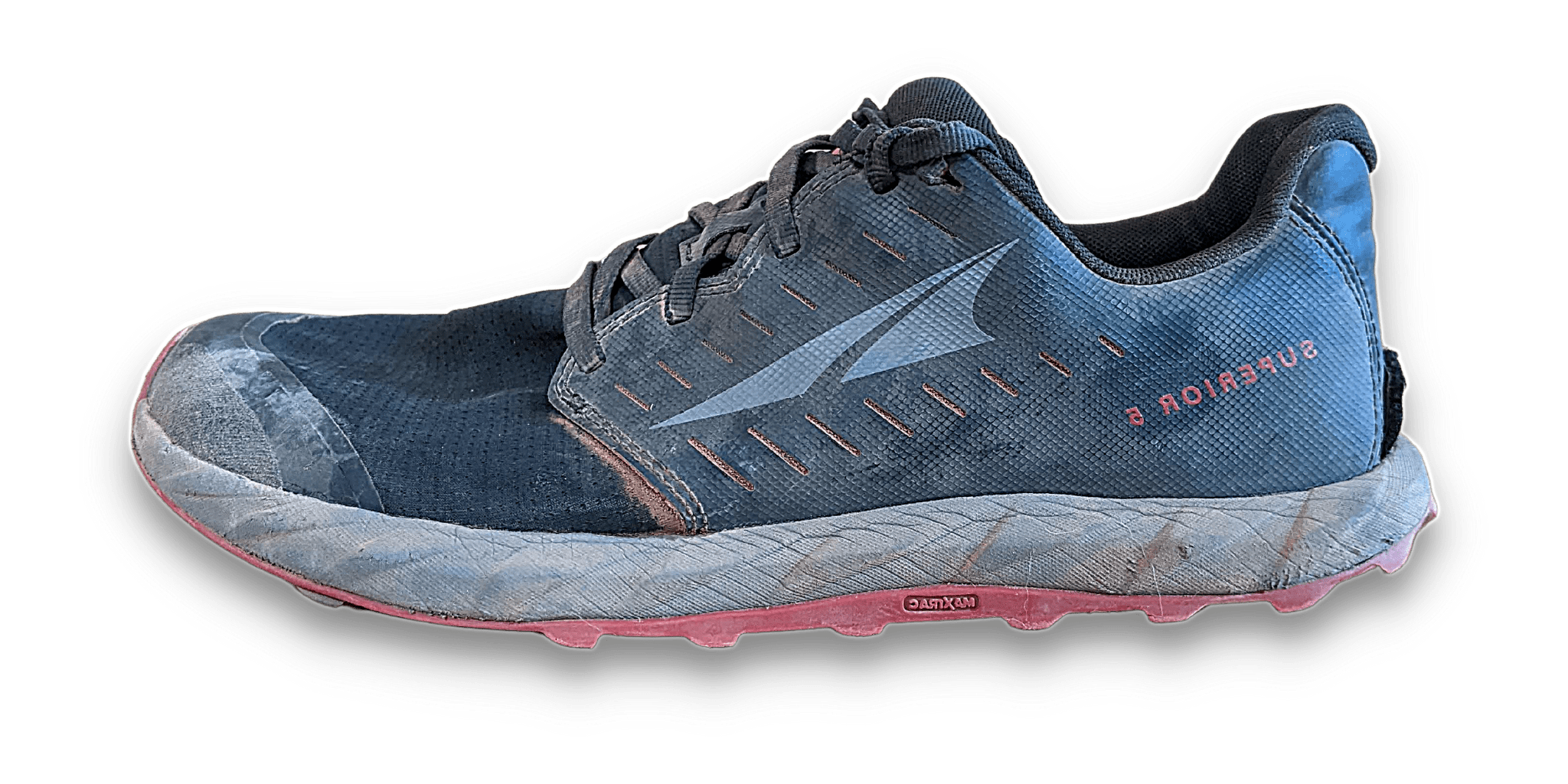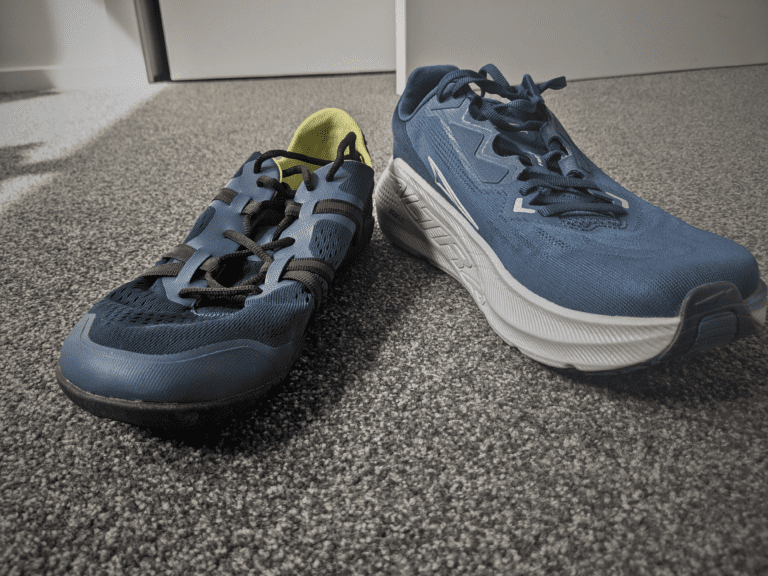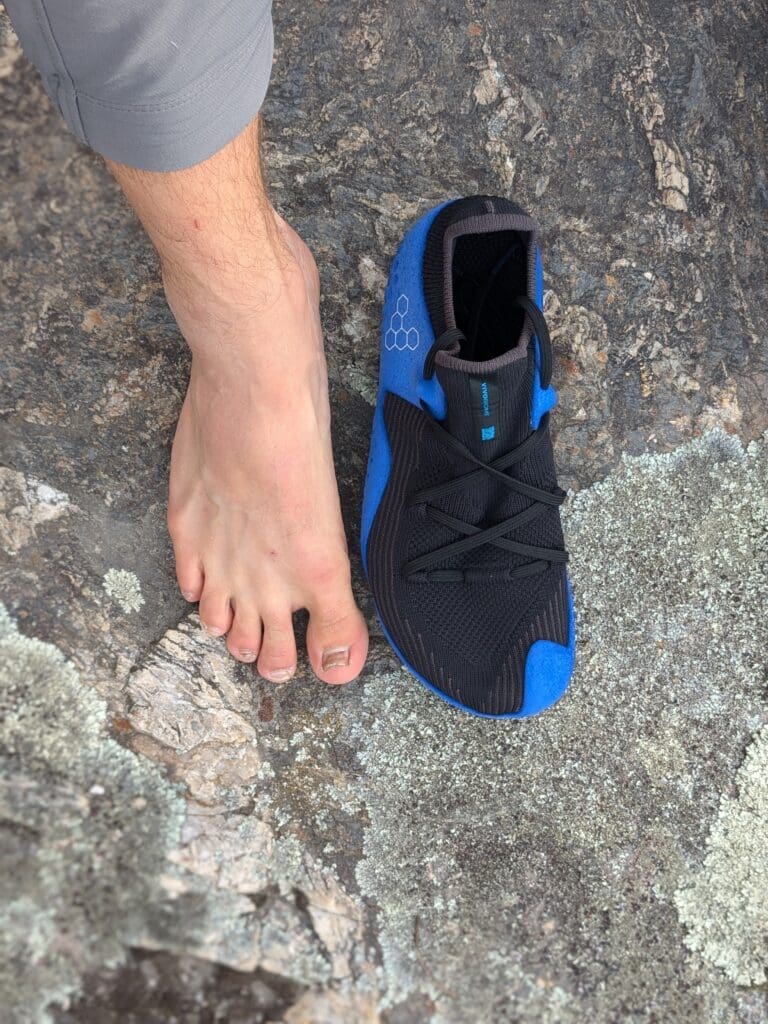Since you’re here, you might be considering investing in some Altras. Good choice! I think Altra is a great running shoe brand to consider if you’re a beginner runner.
Here’s why: they are comfortable and made for real feet!
More specifically, Altra offers a unique approach to comfort, performance, and natural movement with their FootShape™ Fit & Toe Box and Zero-Drop philosophy.
They’ve differentiated themselves from other mainstream brands in the running shoe market –and we’re here for it. And if you’re reading this, chances are you are, too.
So, let’s get into the beginner’s guide to running and how Altra shoes can help you transition into the running scene with more comfort, enjoyment, and natural movement.
Which Altra Shoe is for you?
Take a quick 4-question quiz to identify the perfect Altra running shoe for your feet! You'll get both road and trail options based on your answers!
Affiliate Disclosure: By clicking through the links on this page and purchasing the products, you’ll be helping me out. This is done because I receive a kickback from the sellers at no extra cost to you! Thank you so much for supporting us!
The shoe shape and sizing should match your foot. It sounds obvious, but you’d be surprised how overlooked this point is. The problem is that we all use a single number to describe our shoe size. But you’ll notice many differences if you look at your feet compared to the next person.
- Some feet are narrow in the heel and fan out towards the front.
- Some feet are wide throughout
- Some feet are high, or what we call a deep foot.
- Whereas some are thin and shallow
If that doesn’t make finding the perfect fitting shoe difficult, let’s consider the general shape of the shoes on the market (hint: it’s NOT in our feet’s favor).
Our feet are often wider at the toes and forefoot, but often you’ll see shoes from popular companies (cough cough, Nike, Hoka…. Almost all mainstream brands) with a point at the toe box! Why?!
If you want comfort, you want a toe box that matches your foot (and fits your toes comfortably), which means a wider, square-ish toe box! That way, you can be blister-free and won’t end up with long-lasting foot damage!
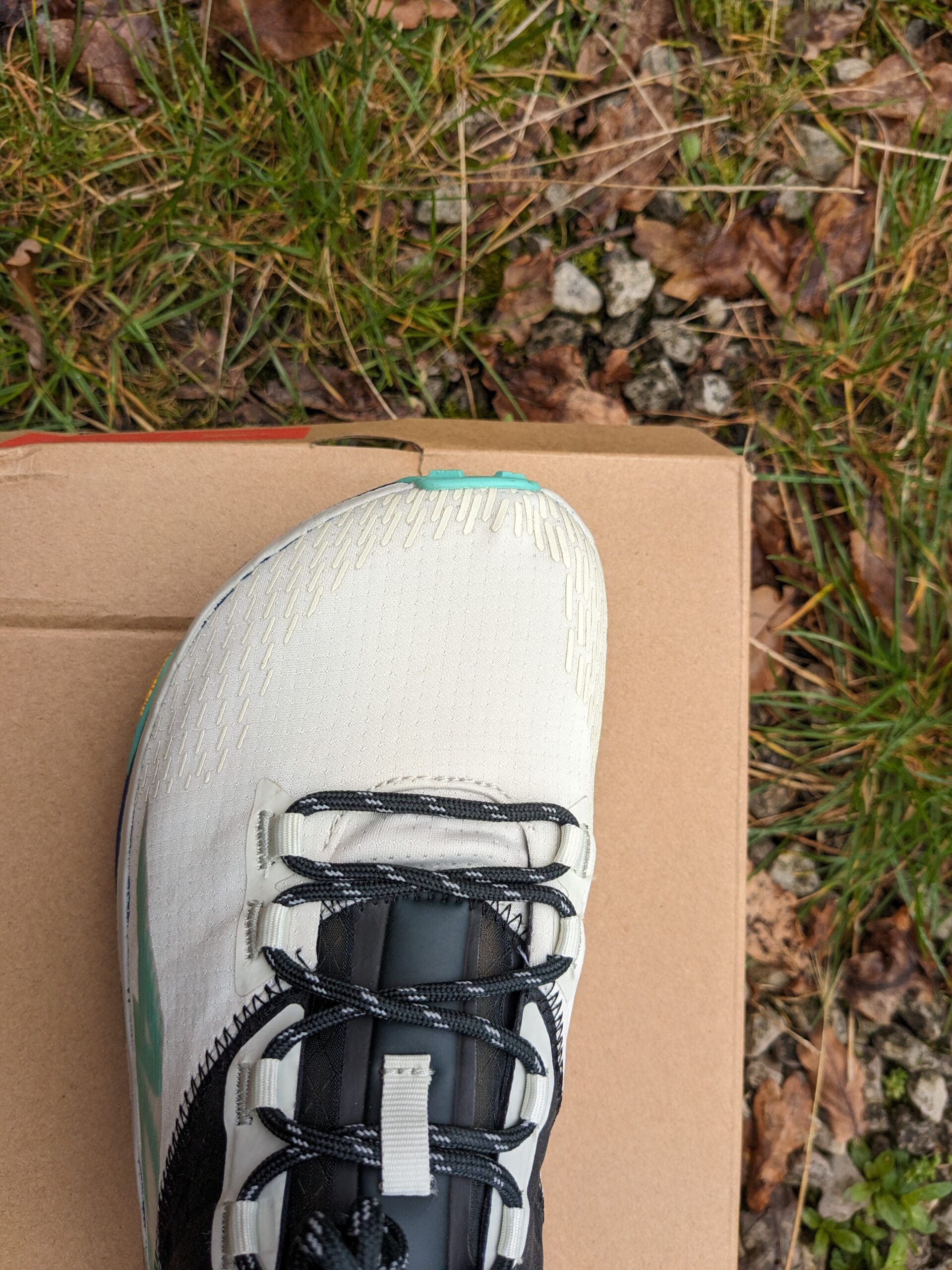
The next point to understand is that “running shoes are a tool to complete a job.” That means there isn’t one best shoe. Instead, there’s a multitude of shoes that can work, but in different situations.
Let me introduce “barefoot” running.
Going back to basics. What do you need to run? A pair of shoes? Nope!
Technically, you could leave your house barefoot and start your run. But you probably won’t get very far. For one, your bare feet aren’t accustomed to the harsh concrete environment, but your feet will tire VERY quickly because they aren’t used to taking the repetitive load of your body weight.
That means we should add some cushion and structure, shouldn’t we?
NO! If you were in the gym, you wouldn’t just add springs under your weight to make a lift easier, would you? Instead, you’ll start slow and light and build up to the heavier weight.
The same goes for your running and your feet. We want to slowly build the feet and lower leg muscles without using interventions like high-cushioned/structured shoes.
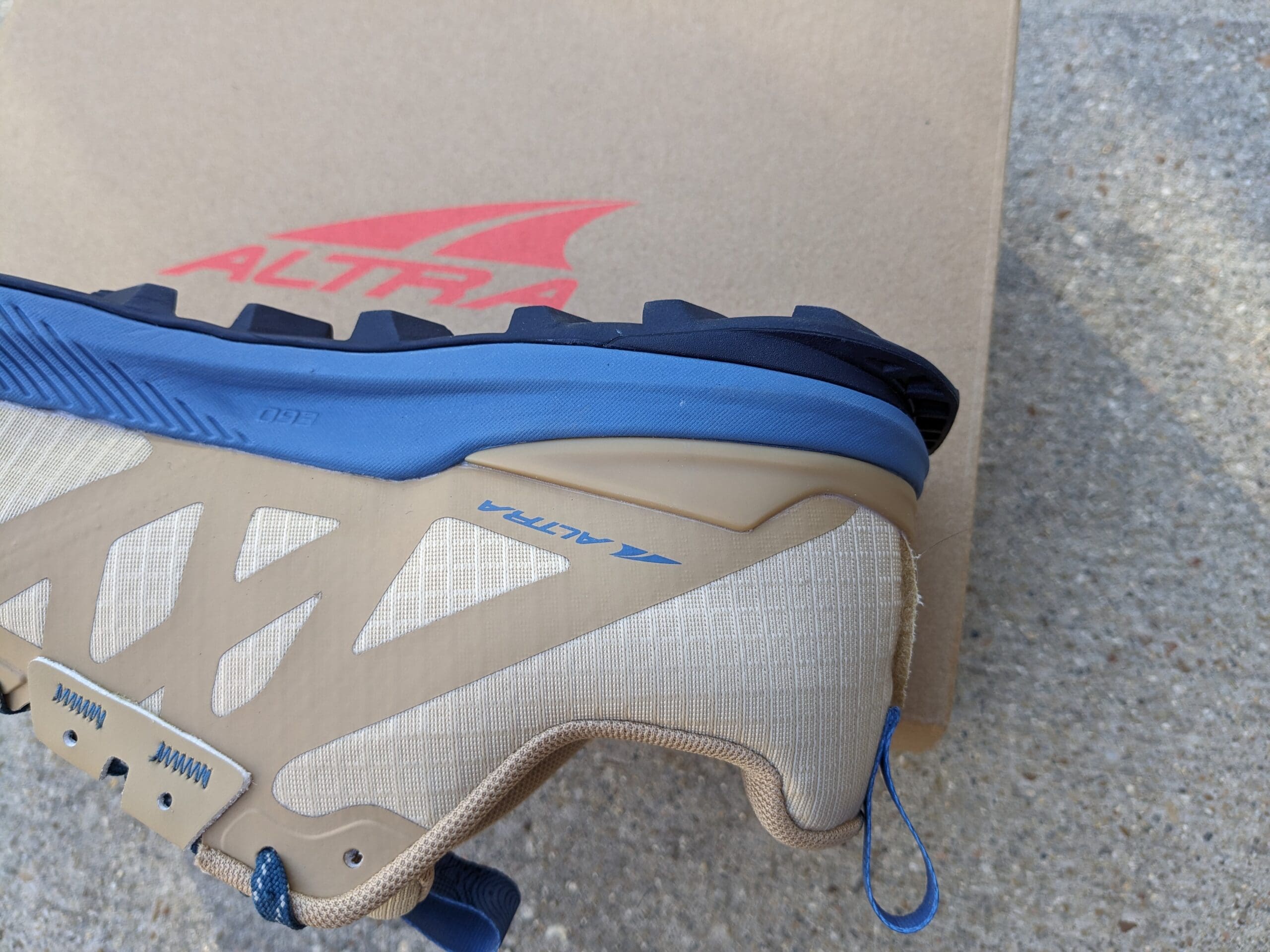
Cushioned shoes are a tool, not a solution. If you want to run fast in a longer race, cushioned shoes will help you do that. But as a beginner, you don’t need to worry about speed.
Cushioned shoes can also be helpful if you’re running on sharp, rocky terrain. Trust me, bruised heels from rocky trails suck. Cushioning is a tool here to help you run on rugged terrain!
If you need to run longer but your feet aren’t conditioned to the distance, cushioned, stiffer shoes can also help. But again, these shoes are a tool, and the real solution is to train and condition your feet and lower legs so they become stronger. It’s the safer, longevity-focused option!
If you want to learn what a barefoot training plan would look like, check out the “Your Barefoot Journey” course. Anyone can do it!
FootShape™ Fit & toebox for natural foot alignment and comfort
Altra is big on natural foot shape. So much so Altra’s FootShape™ Fit is designed to give your feet more space to sit naturally. All their shoes have plenty of room in the toe box for that toe splay.
Why is toe splay so important?
There are so many reasons toe splay is essential for healthy feet for everyone, including runners. But I’ll highlight some key ones.
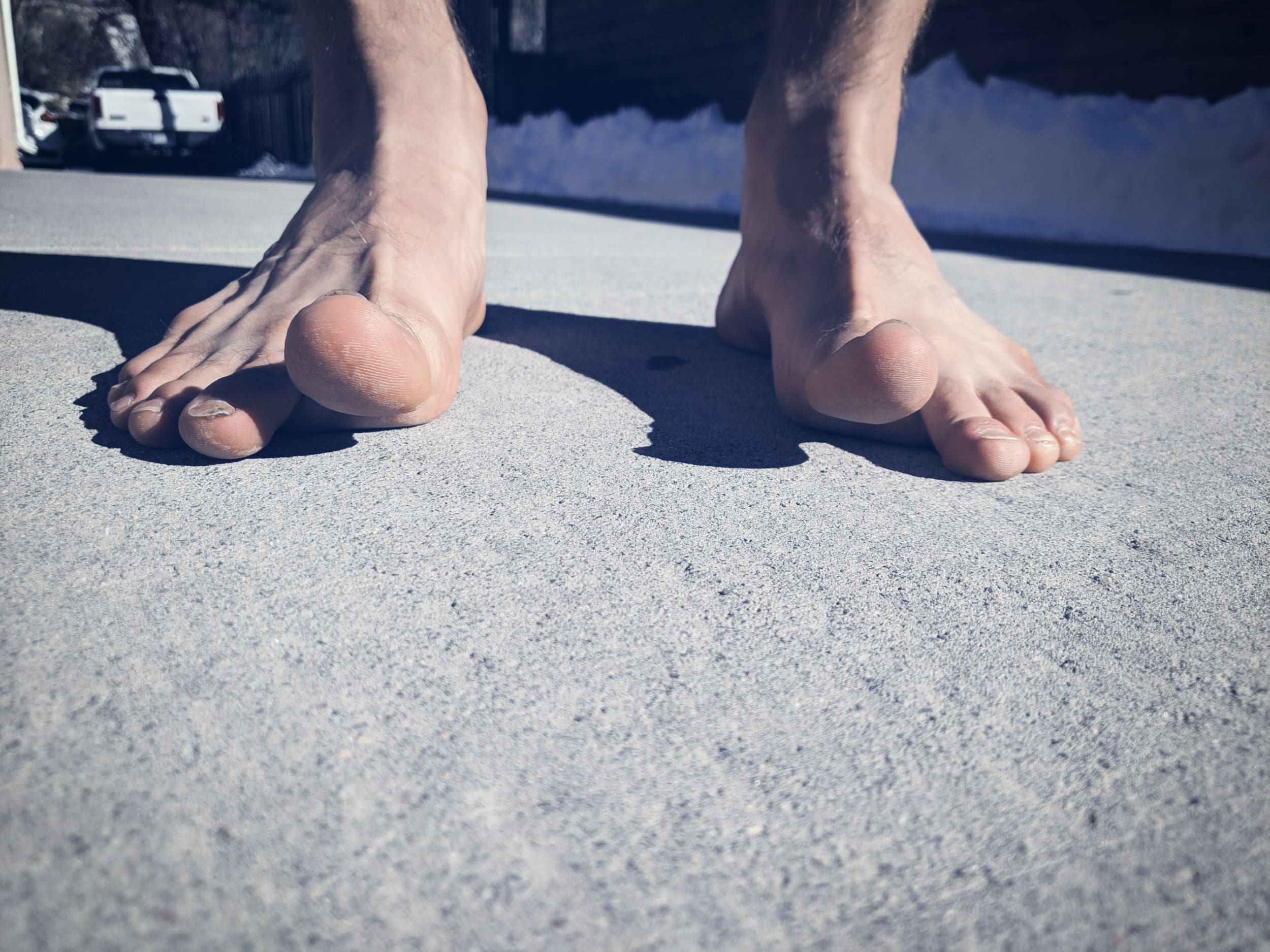
When the toes are allowed to splay out naturally during a run, they create a wider base of support for stability and balance. This stable foundation helps distribute your body weight more evenly across your foot, reducing the risk of tipping or rolling the foot inward or outward –preventing many (unnecessary) shoe-related injuries. As a beginner runner, this is crucial.
When the big toe, in particular, can extend fully, it contributes to a more efficient and powerful push-off. In turn, this can help activate the posterior chain, the line of muscles that run up the back of the leg up to the glutes. This can’t happen when your big toe is squashed in a pointed toe box.
Plus, when you give your toes space, you naturally reduce the chances of blisters between the toes, especially if you use toe socks like Injinji.
Zero-drop philosophy

Unlike traditional shoes with raised heels, all Altra models (spoiler: until recently!) boast a zero-drop platform, meaning the heel and forefoot are at the same height. Imagine your bare feet on hardwood floor. That’s what zero-drop emulates.
While it’s a contested philosophy, it makes logical sense that having your foot in a similar position to what it would be when barefoot is the safest, most optimal option.
It’s been seen to encourage a forefoot/midfoot landing, which many believe to be the pillar to safer running as it encourages foot, ankle, and lower leg activation to soften the landing of each stride.
Balance of Barefoot and Cushion

If you read my rant about barefoot, you’ll know that I think barefoot is a fundamental pillar in any running plan. But that doesn’t mean I shy away from cushions!
I also run in Altra’s, ranging up to 29mm in cushion!
If I’m running a long race or heading out on rocky terrain, I opt for Altras because of the protection and the “helping” hand a little cushion can give.
And with some Altra models, you don’t have to sacrifice too much flexibility or ground feel, meaning you get some barefoot feel with cushion benefits for those longer efforts!
Even though you’re a beginner now, you might have some big goals for your running (half marathon, marathon, ultra trail runs, multi-day races, or maybe podium places?). Using cushioned shoes like Altra in your running shoe rotation can help you reach these bigger running goals (just remember that barefoot shoes can be equally as helpful!)
Altra’s made it their business to design shoes suitable for a wide range of runners, from beginners to experienced athletes, and for various distances and terrains. But this post is for beginner runners, so let’s talk about the shoes best suited for you.
Top 2 Road Running Shoes For Beginners
Torin 7
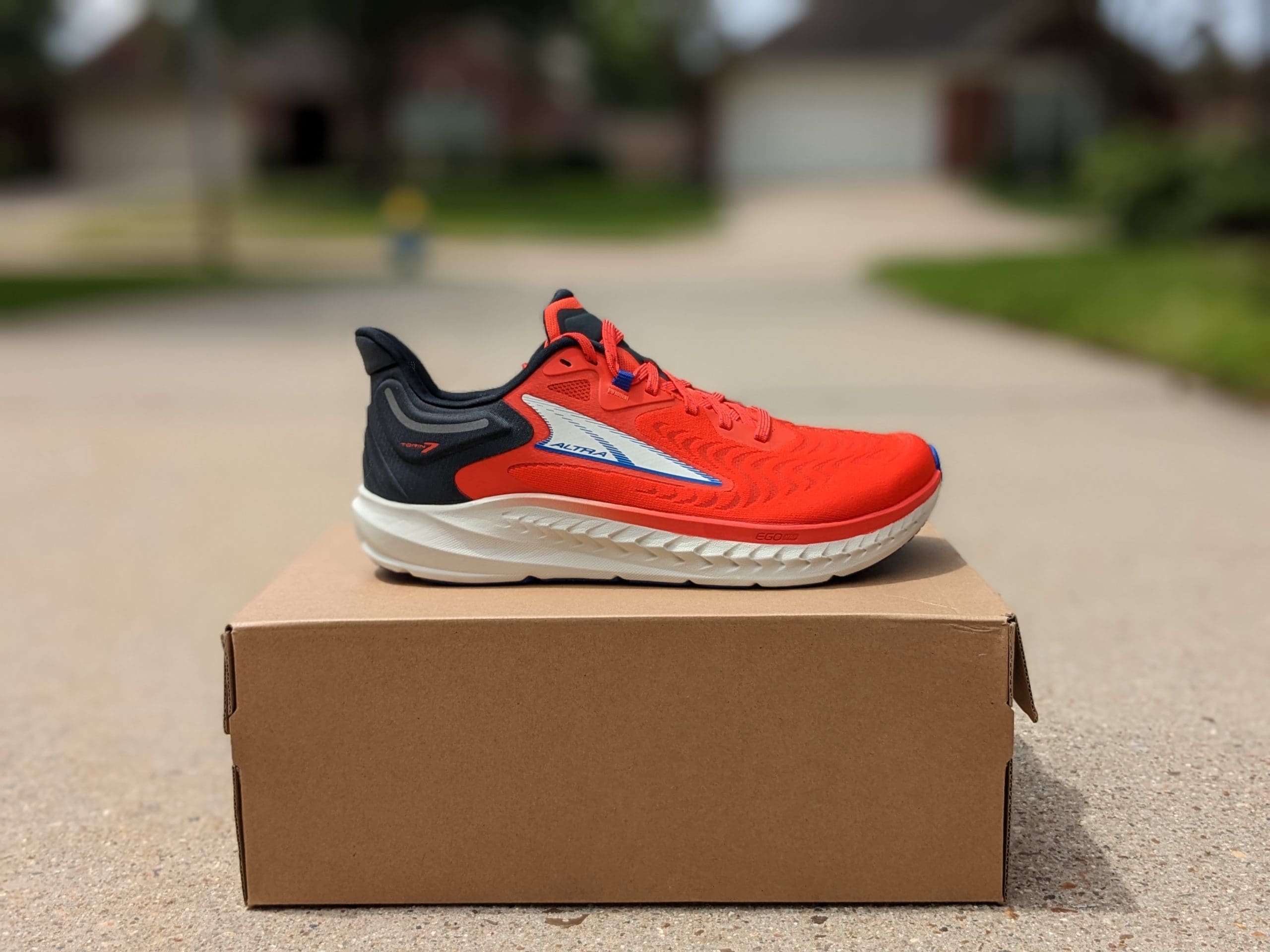
A great wider and larger stack height road shoe option from Altra. That larger stack height means it’s a more cushy ride. If you’re a beginner runner, you might not have developed the lower leg muscles yet, and more cushion could help ease you into running slowly in this new shoe style.
It offers balanced cushioning and a reasonable amount of flex throughout the sole. Even though the Torin has a lot of cushion, it still maintains a ton of flex for a bigger shoe. Again, this will help introduce foot activation without overloading the feet with too much stimulation.
The thin woven material is lightweight, flexible, and forgiving, making it suitable for beginners looking for a comfortable ride. It’s no secret that some running shoes crush your feet and are uncomfortable. The upper on the Torin helps provide a secure fit, but it’s thin enough and flexible enough to mold to the contours of your foot.
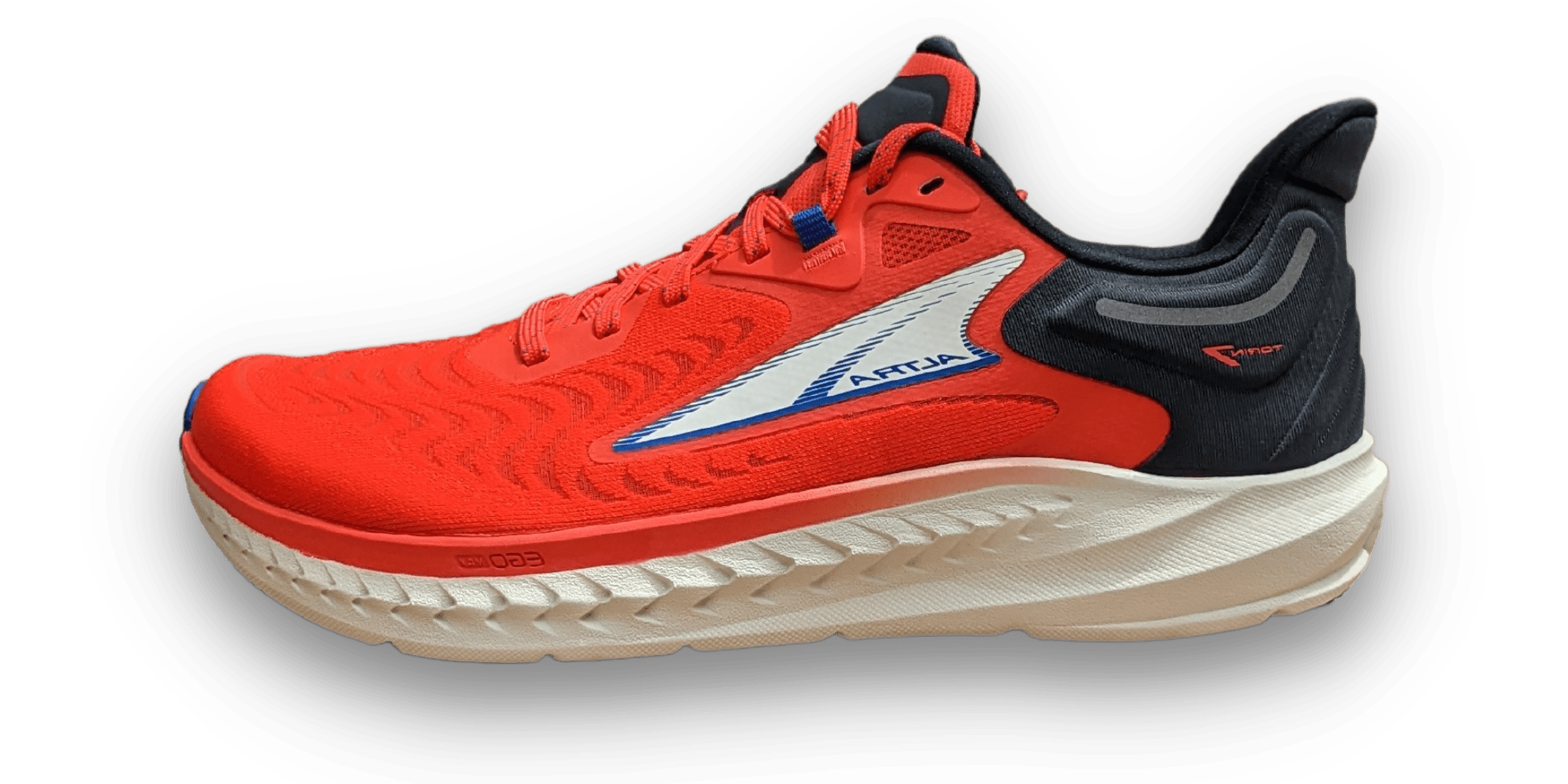
Altra Torin 7
Escalante 4
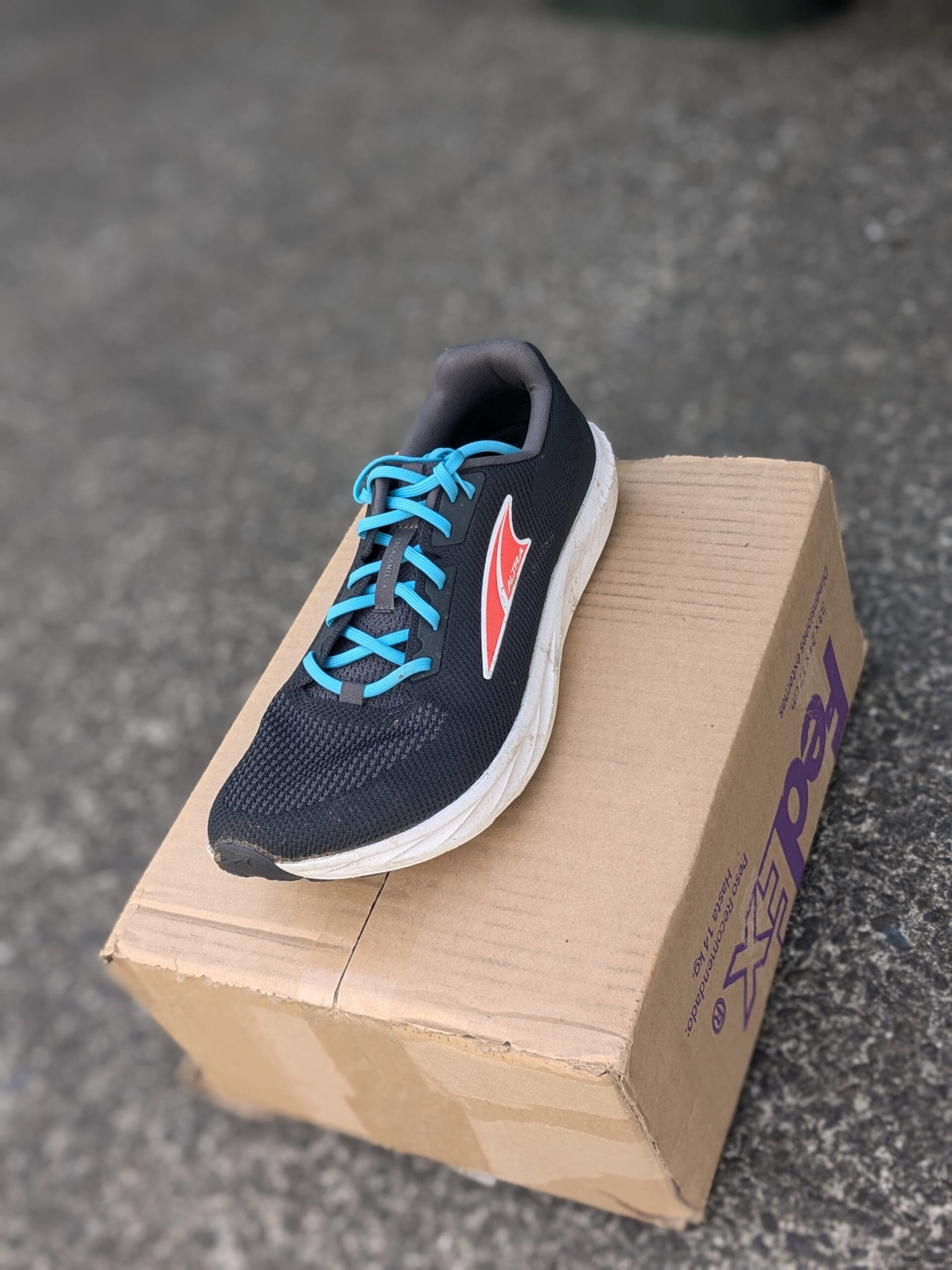
Being one of the most minimal Altra shoes, the Escalante offers a barefoot feel in a cushioned package. You won’t feel the “squish” many are used to with highly cushioned shoes, but I promise that’s a good thing! It helps your body feel more of the sensations of the ground, helping your brain send signals to react to the external forces and pressures!
The upper has more structure, making it rigid and resilient to scuffs and scrapes. This can be a good thing if you try these shoes on the trail (which isn’t unheard of, even though these are classified as “road” shoes). Your foot is locked more securely in place thanks to the redesigned upper. It’s also worth noting that the loose, tough weave on the Escalante will go much further than the Torin –should you choose to make these your hybrid running shoes.
The fitted midfoot and shallow depth makes it perfect for someone with a narrower, shallow foot. If your foot is on the wider end of the scale, you might be pushing out of the side of Escalante 4, so I’d skip this model and look at the Torin instead. But that doesn’t mean the toe box isn’t wide! Don’t worry; it’s still nicely squared off.
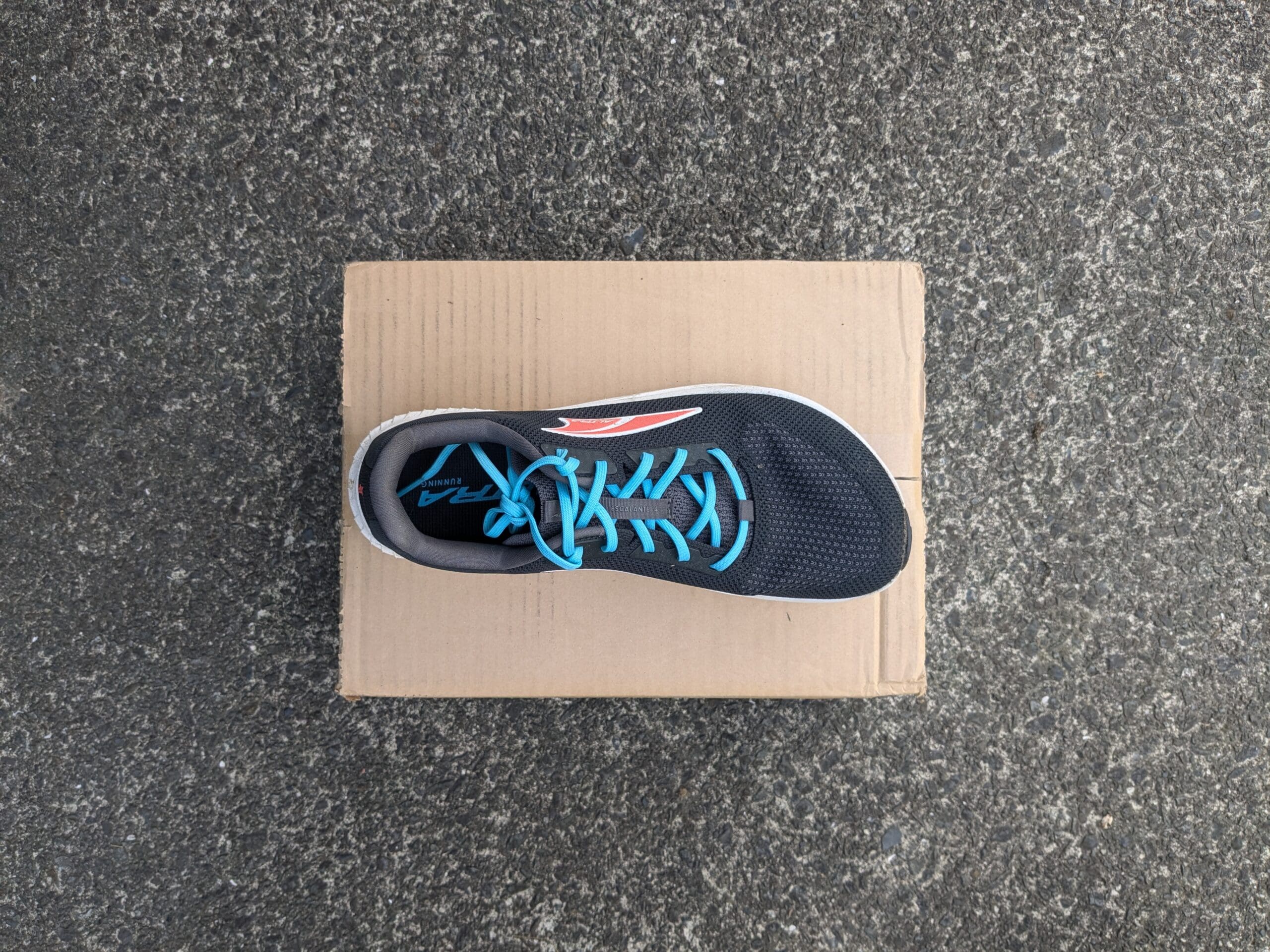
This model’s Innerflex technology is less pronounced, leading to a stiffer forefoot and rolling toe-off. This is arguably a good thing for beginner runners! The stiffer sole will help take some load off the feet while you get used to putting in the miles. I’d still suggest moving into something more flexible in the long run, but the Escalante can create a good starting point.
It’s a go-to shoe for a variety of running scenarios and distances –again, making this a great shoe for beginners. The Escalante 4 is versatile enough to handle daily training runs, tempo runs, and road races. Its responsive cushioning and lightweight construction suit various training intensities, allowing beginner runners to explore different workouts and distances. If you’re looking for a 5km up to the half-marathon distance speed work shoe, the Escalante is a perfect choice.
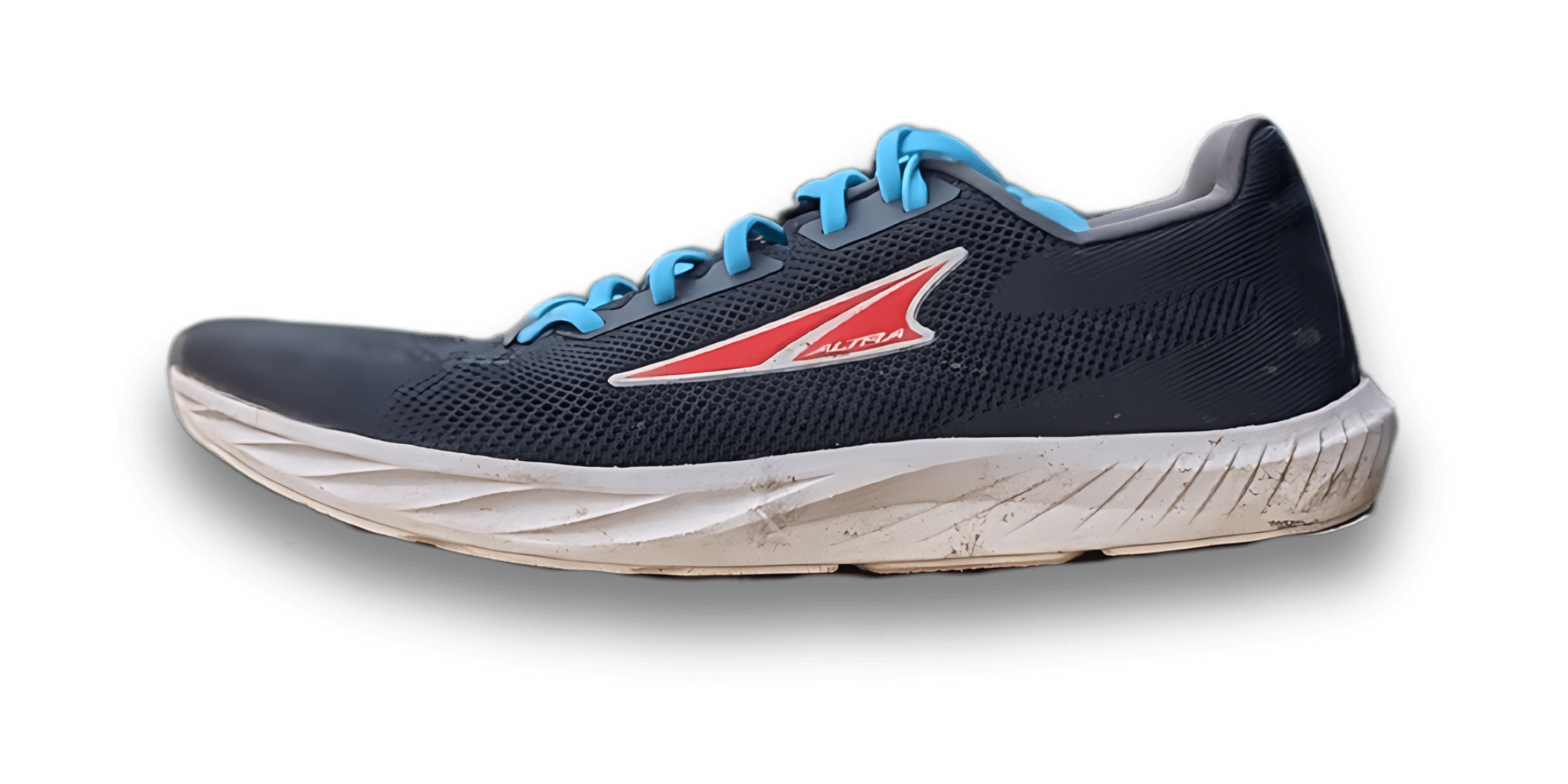
Altra Escalante 4
Top 2 Trail Running Shoes For Beginners
Lone Peak 9+

Altra Lone Peak is the best all-rounder trail shoe for several reasons. It’s always maintained its roomy feel and fits most feet. Plus, the relaxed fit makes it comfortable for beginners ramping up their mileage.
They work for low and high mileage runs, rough terrain, or more buffed-out trails. As the OG Altra shoe, it shouldn’t be surprising that this model works well across the board. For newer-to-the-trail-scene-runners, the Lone Peak offers enough underfoot protection while still being comfortable for long distances, making this a great option if you’re still figuring out what kind of trails and distance you want to run.
For a 25mm stack height, it boasts a decent amount of flexibility. There’s no rocker motion to this shoe. All the forward propulsion comes from your feet and legs. For newer runners, you might need to build up more foot and leg work (but that’s a good thing!). And while some stiffness in the midsole from the forefoot back contributes to some “pop,” if you’re coming from conventional shoes, you likely won’t feel it.

The upper is more flexible and forgiving, making it more accommodating for those quick foot movements across the rocks. But it still has overlays that protect the midfoot and tow box from scuffs. This is good, especially for novice runners still “finding their trail feet.” The Lone Peak 9 has found a nice balance between comfort and lockdown, meaning this is a tremendously comfortable trail shoe.
In dryer and snowy conditions, the traction is immense. Even muddy conditions. This shoe is reliable due to its tacky outsole and deep, multi-directional chevron design. I had 100% confidence in every foot placement, which makes me confident in recommending them to newer trail runners.
It’s cushioned but remains flexible and unstructured, which is great for new runners. This moderately cushioned shoe is perfect for those longer distance efforts. As you get used to zero-drop and running, I suggest a shoe lower to the ground for short distances and speed work. Slow plods and some speed sessions (if the terrain wasn’t too technical) could work in these, but overall, the Lone Peak better suits those 1-2+ hours runs.
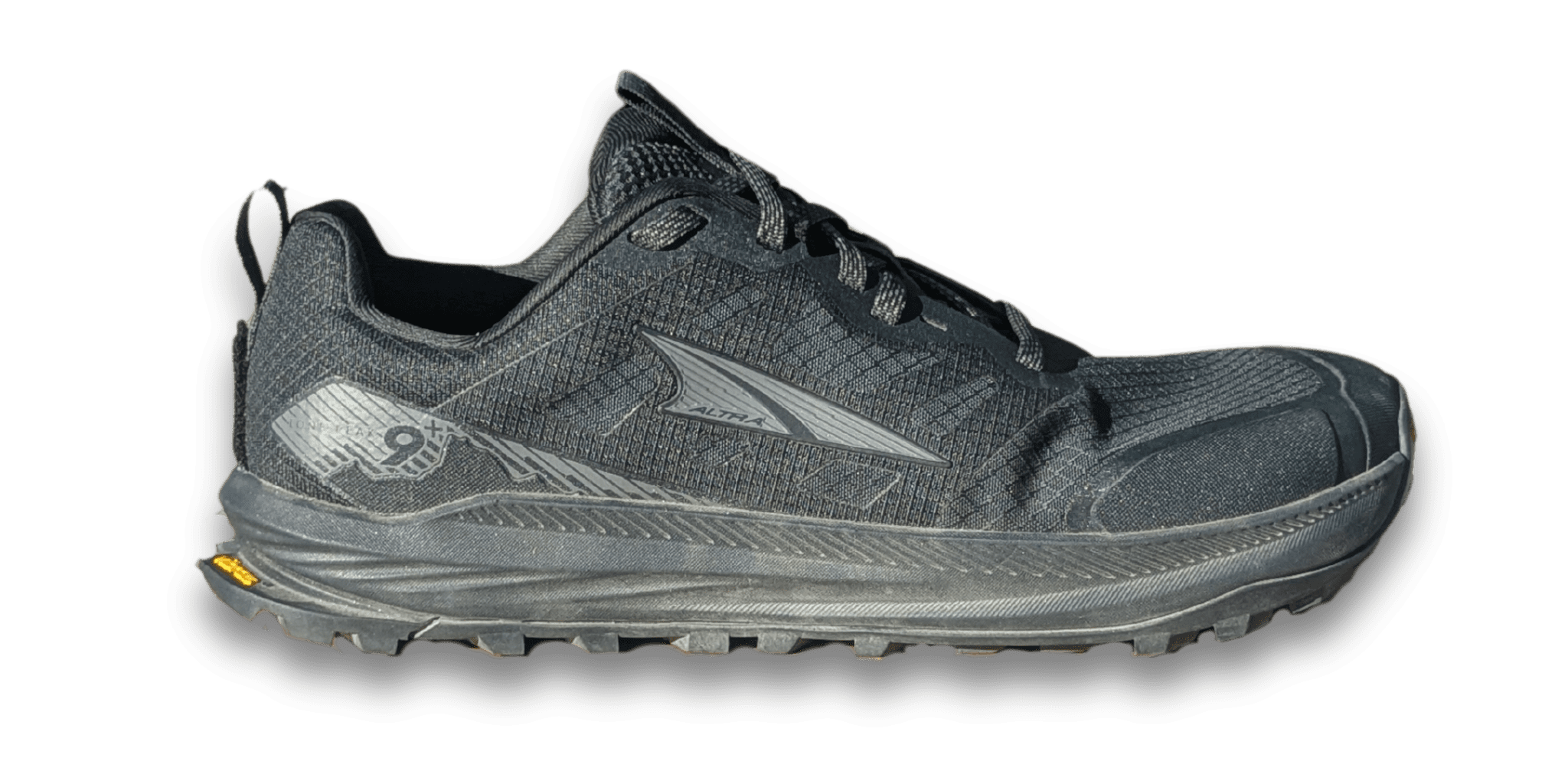
Altra Lone Peak
Timp 5

The Timp 5 is quickly becoming a perfect “long-distance” option for hitting the trails. With a higher stack height than the Lone Peak, the Timp works great when protection is key. As newer trail runners, you’ll need to get used to dancing across the rocks –but until then, opt for a little more protection underfoot.
The stiffer midsole and mildly rockered toe-off reduces foot fatigue. Normally, I’m against stiffer shoes, but if you’re a beginner ramping up your mileage on the trails, using a stiffer shoe can allow you to increase the distance without overstressing your feet. In the long run, we want to move you into something more flexible like the Superior. But it’s fine to start your journey in the Timp.
With the addition of a Vibram outsole, beginners will have a more reliable grip in wet and dry conditions! As you navigate across rocky or technical terrain, knowing a solid, tacky grip underfoot will give you the confidence to maintain momentum. And the lugs allow you to plow through moderately muddy conditions.
The fitted midfoot suits those with a narrower foot. Although wider than most conventional shoes, the Timp isn’t the widest option. You need to look at the Lone Peak for that. We all have different feet, so fit is personal. Find the model that works for you!
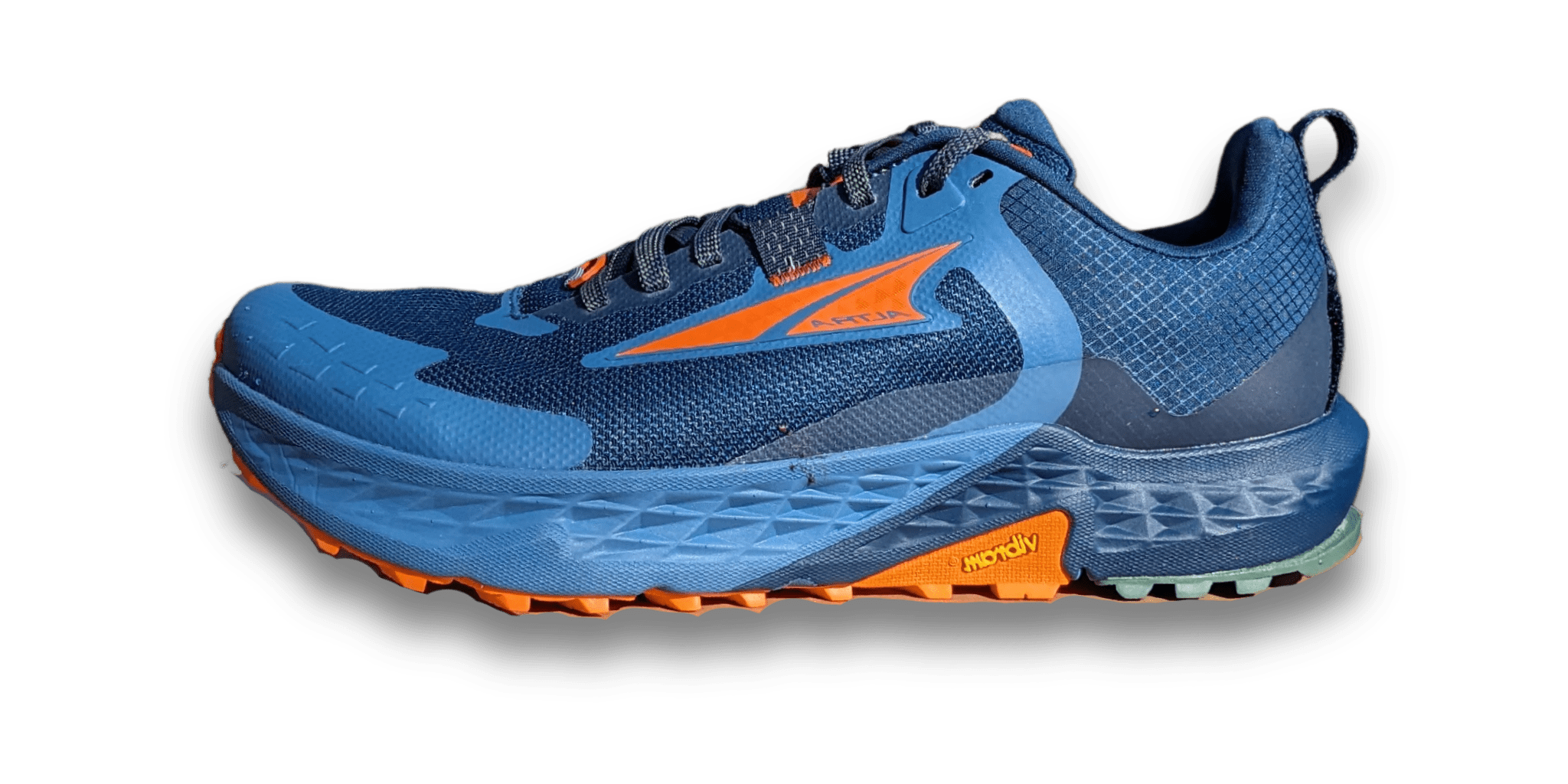
Altra Timp 7
The choice between road and trail shoes depends on two key factors: your running environment and your shoe preferences. The main goal is to choose the right footwear to conquer the terrain and distance with comfort and confidence.
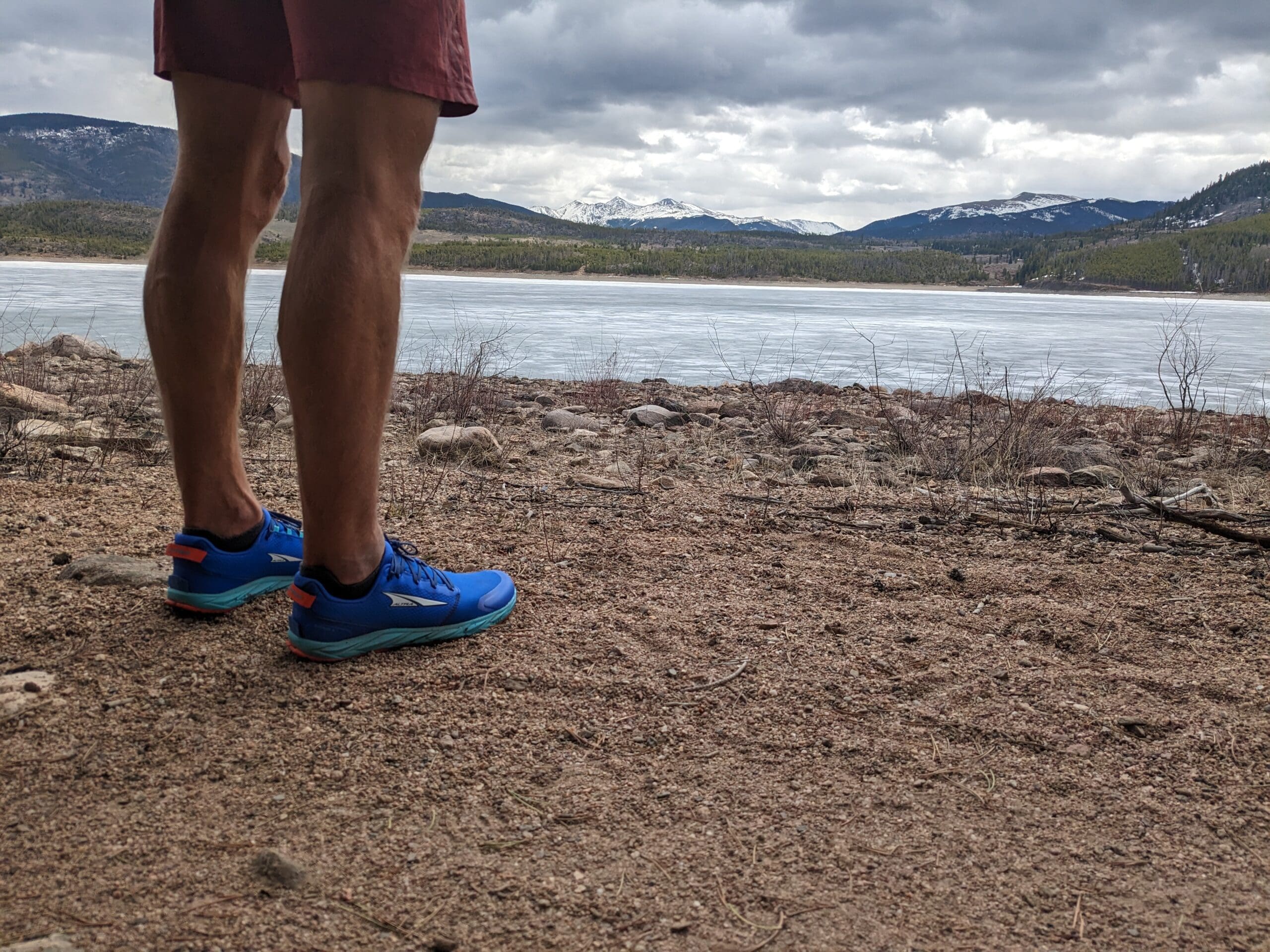
Running roads or trails (or both) will impact the models you consider
Road running shoes are designed for smooth, paved surfaces and prioritize cushioning, flexibility, and breathability. With smooth, flat outsoles and lightweight designs, they should offer a comfortable ride and optimal responsiveness for faster-paced workouts and races.
Trail running shoes are tailored for off-road terrain and prioritize durability, stability, and protection. They often have lugged outsoles that provide superior traction and grip on uneven surfaces, protective features like toe guards and rock plates, and enhanced stability to navigate challenging trails safely.

Why stack height matters
A higher stack height is another way of saying more cushioning. And as we now know, more isn’t necessarily better. But if you’ve got a goal race coming up, and you’re not sure your feet can take the load of running X miles, cushion can be your get-out-of-jail-free card.
Just remember to use the cushion responsibly. 🙂
However, it’s important to note that excessively high stack heights can compromise stability and responsiveness due to a loss of ground feel. We have to balance the options and determine what shoe is best for the job.
Lower stack heights offer a more minimalist feel, promoting a closer connection to the ground and enhanced proprioception. However, it also lacks sufficient cushioning for newer runners looking to build distance goals quickly.
Suppose you’re committed to building running strength sustainably (which I highly recommend). In that case, you can use minimal shoes like Vivobarefoot Primus Lite or the Xero Shoes Mesa Trail II and build up your distance slowly.
I also recommend my Barefoot Running Journey Course…
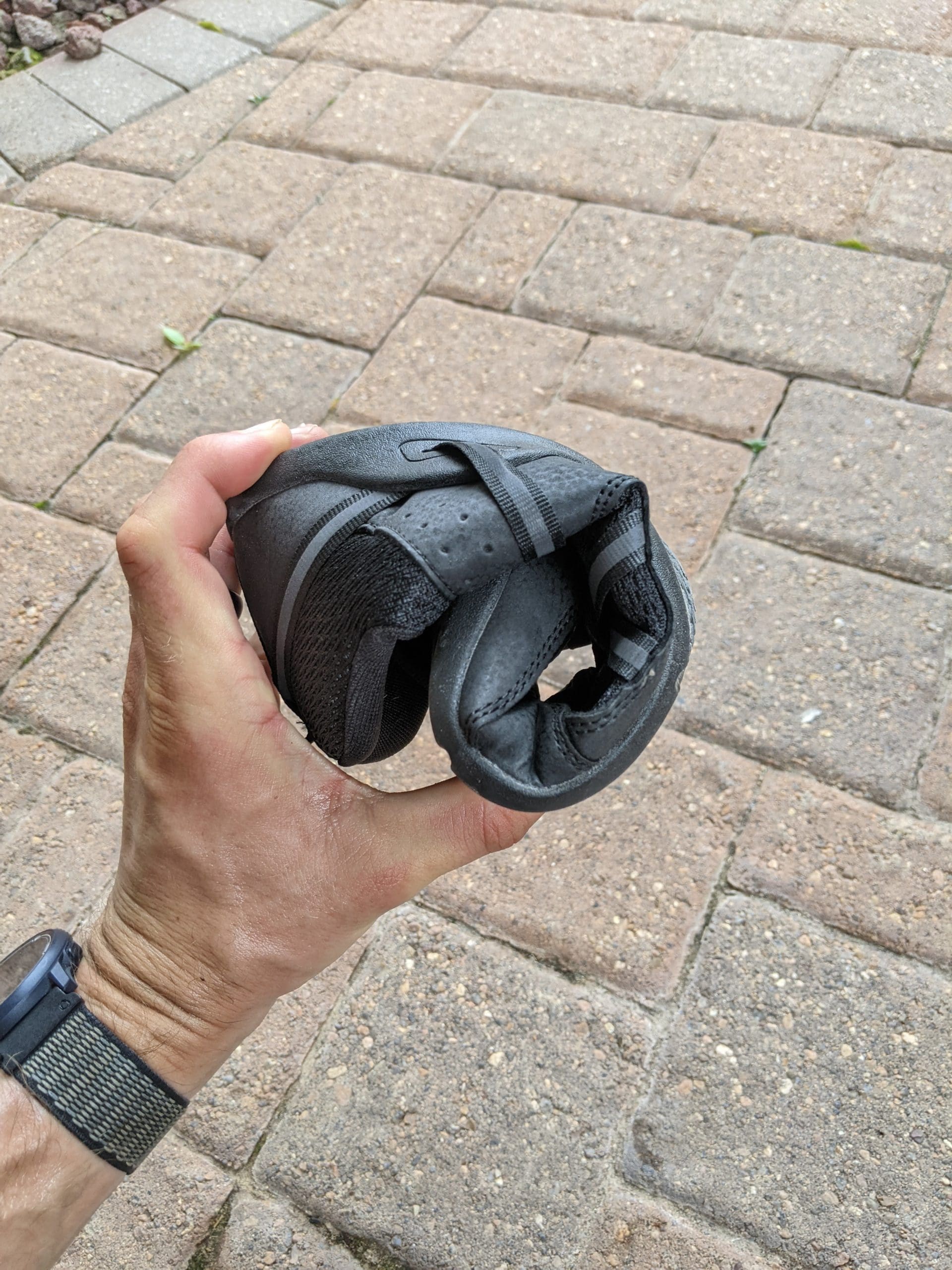
Why you want flexibility in a shoe as a beginner
On one side of the coin, a flexible shoe allows for a natural range of motion in the foot, promoting a smoother and more efficient stride. It also helps to reduce stress on the muscles and tendons, lowering the risk of overuse injuries.
On the other, excessive flexibility can compromise stability, particularly on uneven terrain or during sudden changes in direction.
You want to balance flexibility and rigidity to ensure adequate stability and protection while maintaining a natural foot movement. Finding a middle ground with stack height and flexibility will provide a comfortable and enjoyable running experience while minimizing the risk of injury and maximizing performance potential.
I mentioned Altra models are (predominately) zero-drop. But if you’ve been running in conventional shoe brands, your feet and legs probably aren’t used to this. Like starting any new workout move or training, you must start slowly and build up to it.
You can’t just jump feet first (get it?) into zero drop shoes as a newbie, especially if you want to avoid injuries.
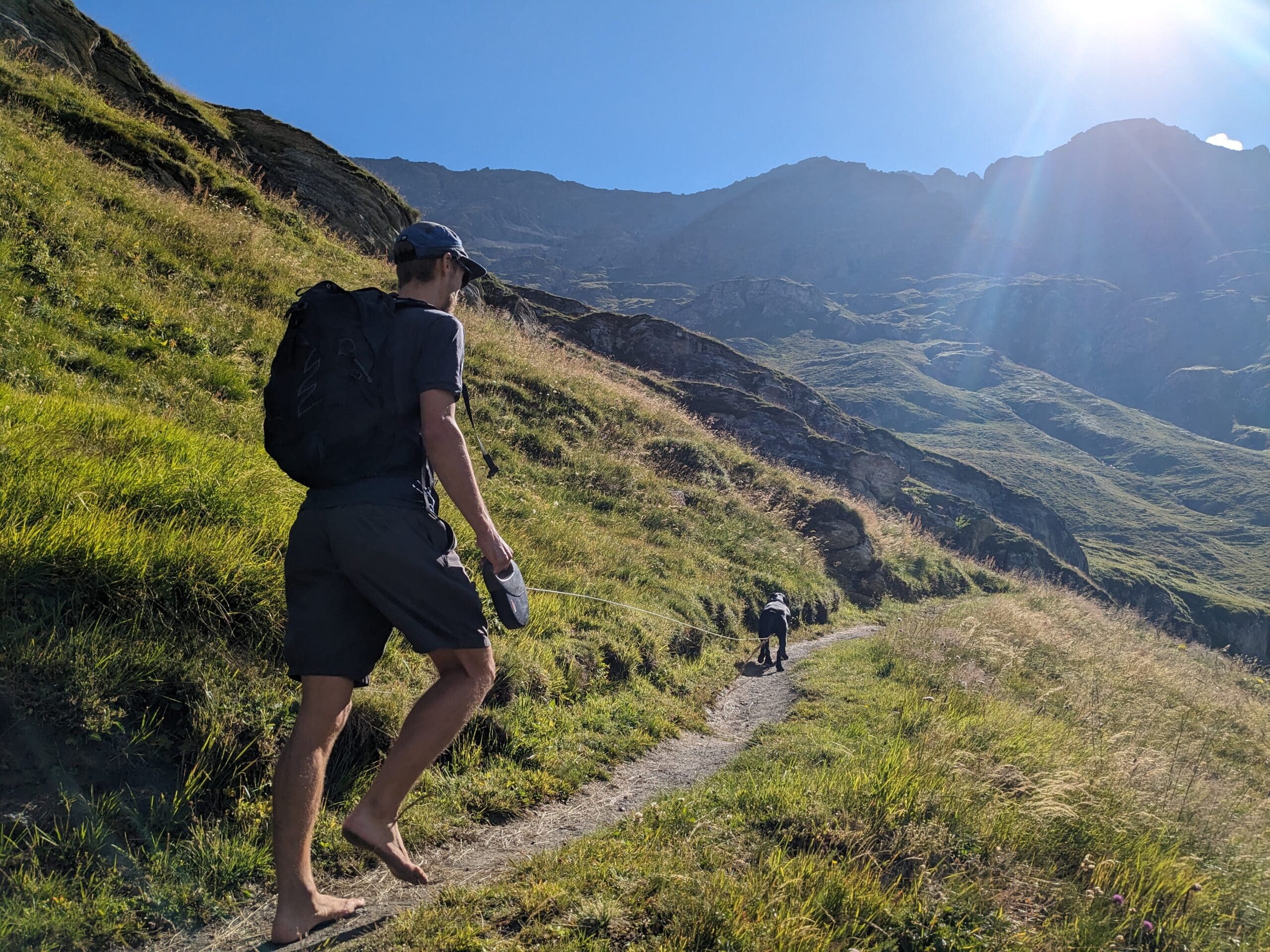
3 Tips to transition to zero drop/balanced cushioning for new runners to avoid injuries
It bears repeating: go slowly! Easy does it. If you don’t normally walk barefoot around the house or have never tried zero-drop shoes, it takes some getting used to! It’s likely because you haven’t engaged your feet and lower leg muscles in years (or ever). So don’t expect to be able to run more than a mile or so right off the bat. In fact, I would suggest you first get used to walking in zero-drop shoes before you ever start running in them.
From there, you can slowly build distance with your new zero-drop shoes. Start with steady, low mileage runs and slowly work your way up or gradually rotate zero-drop shoes into your training runs alongside your conventional shoes. Because, honestly, the transition to running any decent distance in zero-drop shoes can take months.
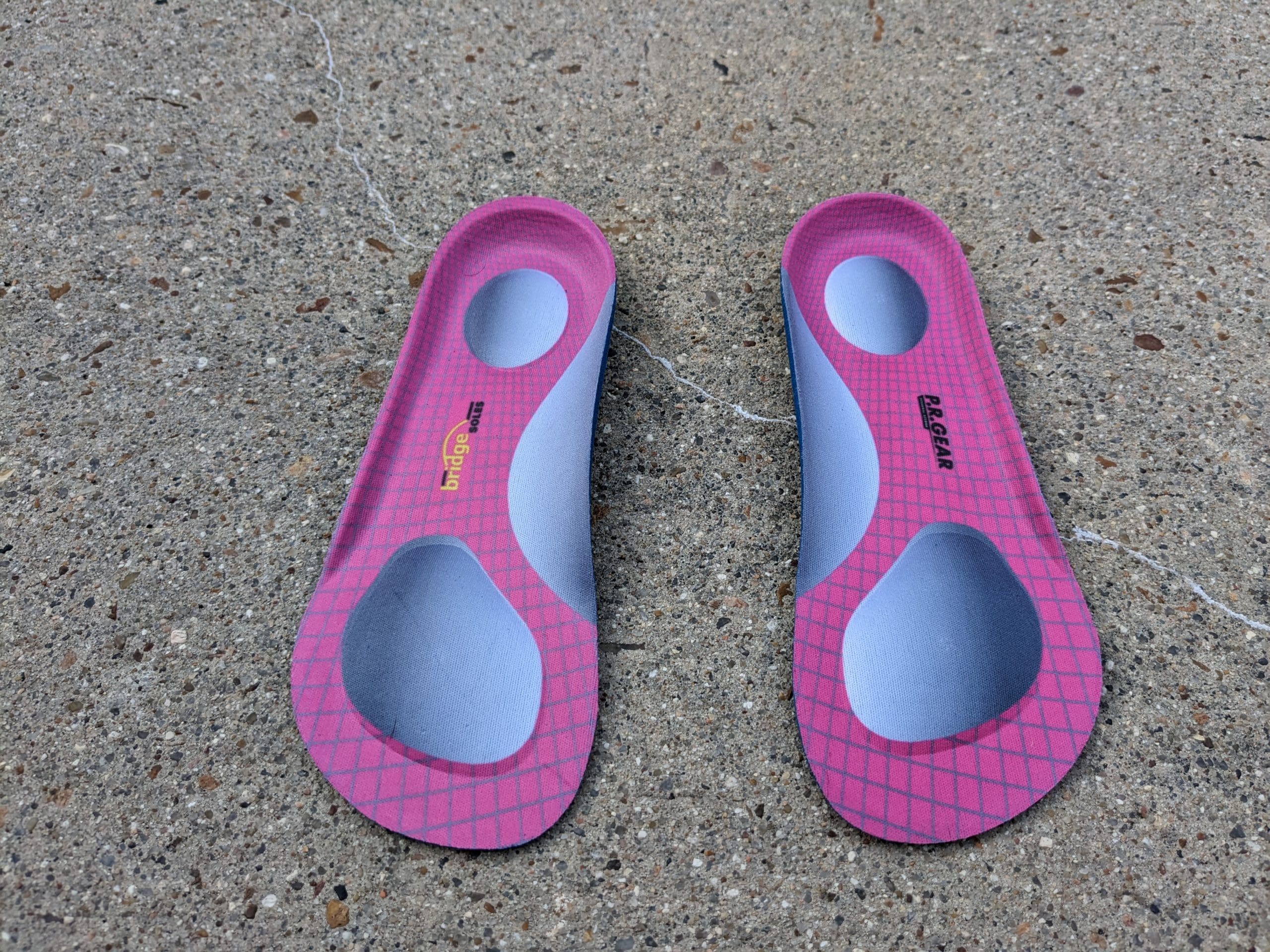
Use a cheat code – PR Gear Bridge soles – these insoles are designed for use during the transition phase from conventional shoes to zero drop/minimal shoes. When you buy shiny new zero-drop shoes, you want to use them immediately! But sometimes, it’s hard on your calves and feet. The Bridge Soles allow you to switch out the existing insoles of the zero drop shoe to add a bit of heel lift and arch support to mildly mimic your old conventional shoes.
Over time, you slowly remove the Bridge Soles so your body can get used to an unstructured zero-drop shoe.
You can read more about the PRGEAR Bridge Soles in my detailed review.
Try some foot massage! During this transition into zero drop, your working muscles and tendons in the feet and lower legs –maybe for the first time in a long while. Massaging the feet and legs will help relax tight muscles, improve circulation, and alleviate tension.
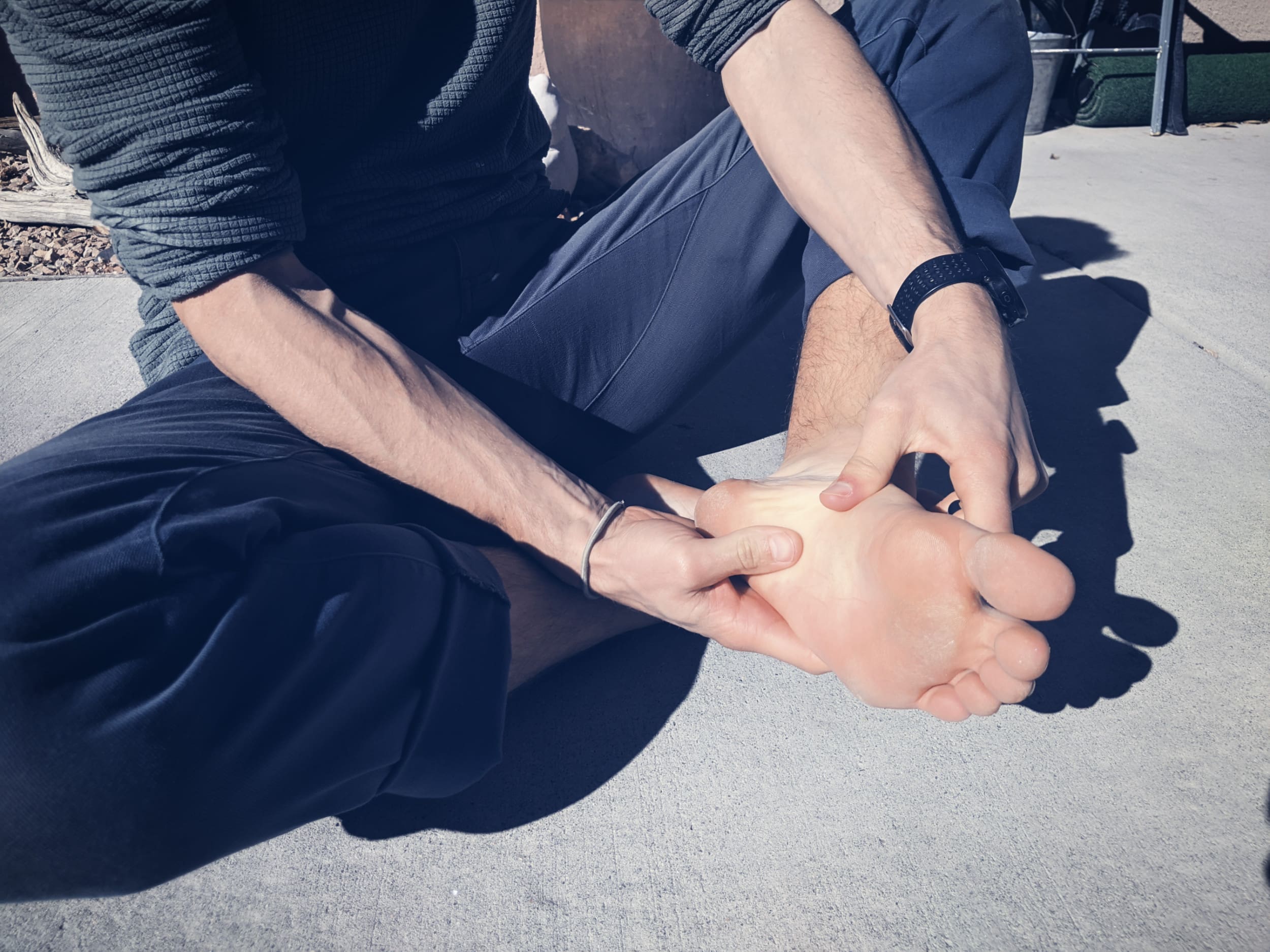
Add specific exercises to your routine. Most running athletes have a strength training routine on top of their running schedule –this is the same concept. Adding feet and leg strength exercises will help you sustainably transition into zero drop shoes and improve your running performance in the long run. Win, win. Here are some examples.
- Toe spreading exercises to help activate and strengthen the muscles responsible for toe splay
- Stretching the calf muscles helps maintain flexibility and prevent tightness.
- Ankle mobility exercises help improve the range of motion and flexibility in the ankles.
- Strengthening the intrinsic foot muscles (like toe curls) helps support the arches and maintain foot stability.
When you have the right gear (i.e., running shoes), you can start reaping the benefits of running, whether around your neighborhood park or on the local trails.
And for many of you, Altra might be the gear of choice to start your running journey!
As always, when selecting running shoes, consider your preferences, prior running experience, running style, and the specific demands of your chosen terrain.
With a wide range of road and trail models, Altra caters to different terrains, distances, and running goals, So you really can’t go wrong with Altra as a beginner runner!
